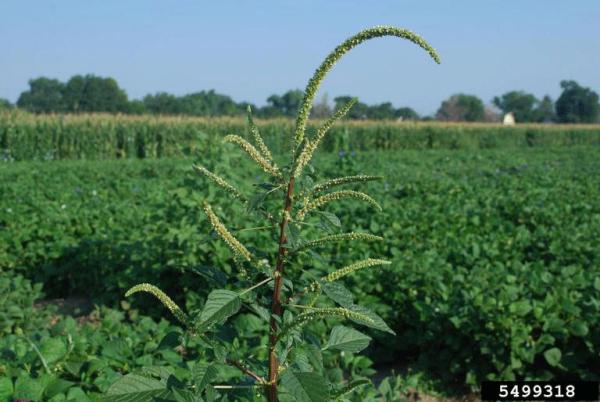Amaranthus palmeri S.Watson (ITIS)
Palmer amaranth, palmer pigweed, carelessweed
Southwestern U.S. (Ward et al. 2013)
First reported outside of its native range in Virginia in 1915, but was not a significant weed in the Southeast until the 1990s (Ward et al. 2013); glyphosate-resistant varieties first appeared in 2004 (Culpepper et al. 2006)
Most likely through the transport of contaminated seed; some recent infestations in the Midwest were caused by contaminated Conservation Reserve Program seeding mixes (Ward et al. 2013; Murphy et al. 2017)
One of the most economically important weeds of corn, cotton, and soybean; some populations are resistant to glyphosate and other herbicides (Ward et al. 2013)

Palmer amaranth in field
Howard F. Schwartz, Colorado State University
Find more images
Spotlights
Distribution / Maps / Survey Status
Videos
All Resources
Selected Resources
The section below contains highly relevant resources for this species, organized by source.
Partnership
Federal Government
State and Local Government
Academic
Culpepper, A.S., T.L. Grey, W.K. Vencill, et al. 2006. Glyphosate-resistant Palmer amaranth (Amaranthus palmeri) confirmed in Georgia. Weed Science 54(4):620-626.
Integrated Taxonomic Information System. Amaranthus palmeri. [Accessed Sep 21, 2023].
Murphy, B.P., D.E. Plewa, E. Phillippi, et al. 2017. A quantitative assay for Amaranthus palmeri identification. Pest Management Science 73(11):2221-2224.
Ward, S.M., T.M. Webster, and L.E. Steckel. 2013. Palmer amaranth (Amaranthus palmeri): a review. Weed Technology 27(1):12-27.
